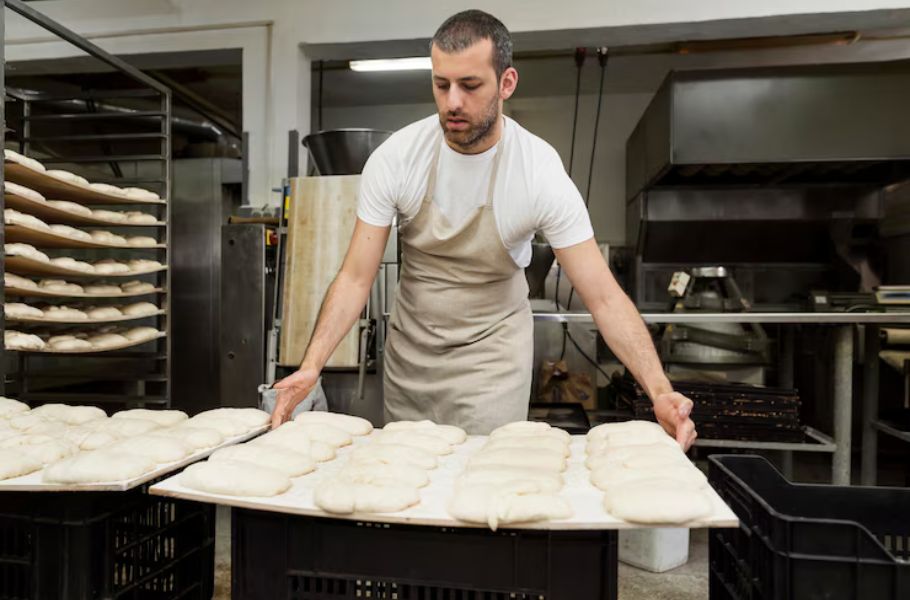The tortellinatrice is a quiet yet essential part of modern Italian kitchens, helping shape perfect tortellini with consistency and care. While rooted in centuries-old tradition, this machine brings efficiency to both artisan chefs and large-scale pasta makers. It blends old-world charm with new-world precision, supporting the future of handmade pasta without losing its soul.
What Makes the Tortellinatrice So Unique?
At first glance, a tortellinatrice might appear to be just another kitchen machine, but for those who understand the craft of pasta making, it’s much more than that. It’s a bridge between tradition and technology.
A tortellinatrice is designed specifically for the creation of tortellini small, ring-shaped pasta usually stuffed with a rich filling of meat, cheese, or vegetables. The magic of the machine lies in its ability to replicate, with impressive accuracy, the manual movements once performed by expert hands. It folds the dough, adds the filling, and seals each tortellino without compromising the softness or integrity of the dough.
This isn’t about replacing human craftsmanship but enhancing it. Skilled chefs and pasta artisans use the tortellinatrice as a trusted companion, allowing them to focus on the finer details of filling flavor and dough texture while the machine ensures perfect, consistent shaping.
How Did the Tortellinatrice Come Into Existence?
To understand the birth of the tortellinatrice, we have to step back and look at the evolution of pasta itself. For centuries, pasta was handmade in Italian kitchens, from Bologna to Modena, with recipes passed down like family heirlooms. Each region had its own method, its own secrets, and its own proud traditions.
But as demand for Italian cuisine grew beyond the family table, the need for consistent, scalable production became evident. That’s where innovation stepped in not to replace tradition, but to support it.
The first tortellinatrici (plural for tortellinatrice) were developed in the 20th century, when pasta producers began looking for ways to increase output without sacrificing quality. These early machines were simple, yet revolutionary. They could produce dozens of tortellini in the time it would take a skilled artisan to shape a few by hand.
Over time, with advancements in food engineering and a deeper understanding of dough behavior, these machines became more refined. Today’s tortellinatrici are built with precise controls, delicate rollers, and customized settings to suit different fillings, dough thicknesses, and pasta sizes.
The Growing Importance of the Tortellinatrice
The importance of the tortellinatrice today lies in its quiet efficiency. In restaurants, catering businesses, and pasta factories, the balance between quality and quantity is everything. A single tortellinatrice can turn out hundreds of perfectly formed tortellini per hour a feat that’s essential when serving high-demand environments.
But there’s more to it than speed. The real value of a tortellinatrice is its reliability. Every piece it shapes is uniform, helping chefs deliver a consistent experience to their guests. It reduces waste, ensures food safety by minimizing human contact, and allows for creative experimentation without worrying about production issues.
Moreover, for small businesses and artisan pasta shops, the tortellinatrice represents freedom. It liberates the hands of the chef to focus on creating better fillings, exploring new flavor combinations, and connecting with their customers. Instead of spending hours folding tortellini, they can now use that time to innovate.
The Silent Strength of the Tortellinatrice
Though it might not be the centerpiece of an Italian kitchen, the tortellinatrice has quietly become a hero in its own right. It stands not in the spotlight, but just beside it supporting, enabling, and empowering the people who bring pasta to life.
Its role in the kitchen is almost poetic: blending the age-old rituals of pasta making with the quiet hum of innovation. It doesn’t remove the soul from the food; it protects it. It gives pasta makers the ability to grow without losing the integrity of their craft.
In fact, many pasta chefs speak about the tortellinatrice not as a machine, but as a partner. A well-calibrated tortellinatrice can mimic the touch of a practiced hand. It knows how tightly to seal the dough, how gently to wrap it, and how to honor the unique shapes that define Italian cuisine.
While some may fear that machines like this take away from tradition, the reality is quite the opposite. They ensure that tradition lives on not just in Italy, but in every corner of the world where someone takes a bite of fresh tortellini and falls in love with its delicate texture and bold flavors.
The Evolving Role of the Tortellinatrice
As we look toward the future of pasta, one thing becomes clear: the tortellinatrice will continue to play a key role in preserving and evolving this cherished food. Newer models are becoming smarter, quieter, and more intuitive. Some are being equipped with AI sensors to adjust for variations in dough, while others offer customization for pasta chefs to create entirely new shapes and styles.
But despite all the tech and innovation, the heart of the tortellinatrice remains unchanged. It’s a tool meant to support human creativity, not replace it.
In schools and culinary institutions, students are being trained to use the tortellinatrice not just as a machine, but as part of a larger journey into the art of pasta. They learn how to balance machine efficiency with human intuition, and how to let each complement the other.
This evolution doesn’t erase the hands-on approach. In fact, it enhances it. Now, chefs can achieve things once limited by time and physical effort. They can cater to gluten-free preferences, create vegan fillings, or shape pasta for international palates all with the help of their silent, steel partner.
So, the next time you enjoy a plate of tortellini whether from a fine restaurant or a cozy deli know that somewhere, a tortellinatrice has played its part. Not in stealing the spotlight, but in making sure the spotlight could shine at all.
Conclusion
The tortellinatrice is more than just a piece of equipment it’s a quiet guardian of tradition, gently carrying forward the legacy of handmade pasta in a world that’s always moving faster. It brings together the best of both worlds: the deep-rooted passion of Italian cuisine and the steady precision of modern technology.
By helping pasta makers achieve consistency, quality, and creativity without sacrificing the soul of their craft, the tortellinatrice stands as a symbol of how innovation can support, not replace, the beauty of tradition.
In every fold of tortellini it shapes, there’s a story one that connects the hands of the past with the possibilities of the future. And that’s something truly worth celebrating.







